Temperature sensor | IO-Link and combined measured variables
- Details
- Hits: 6248
The temperature sensor is indispensable in the Measurement Technology and process control. The latest developments in temperature sensing focus on sensor materials and measurement accuracy as well IO-Link Integration of multifunctions. This article also shows how the latest sensors are used in industrial and technological contexts. Find out how advanced temperature sensors from various manufacturers improve precision in critical areas Applications increase.
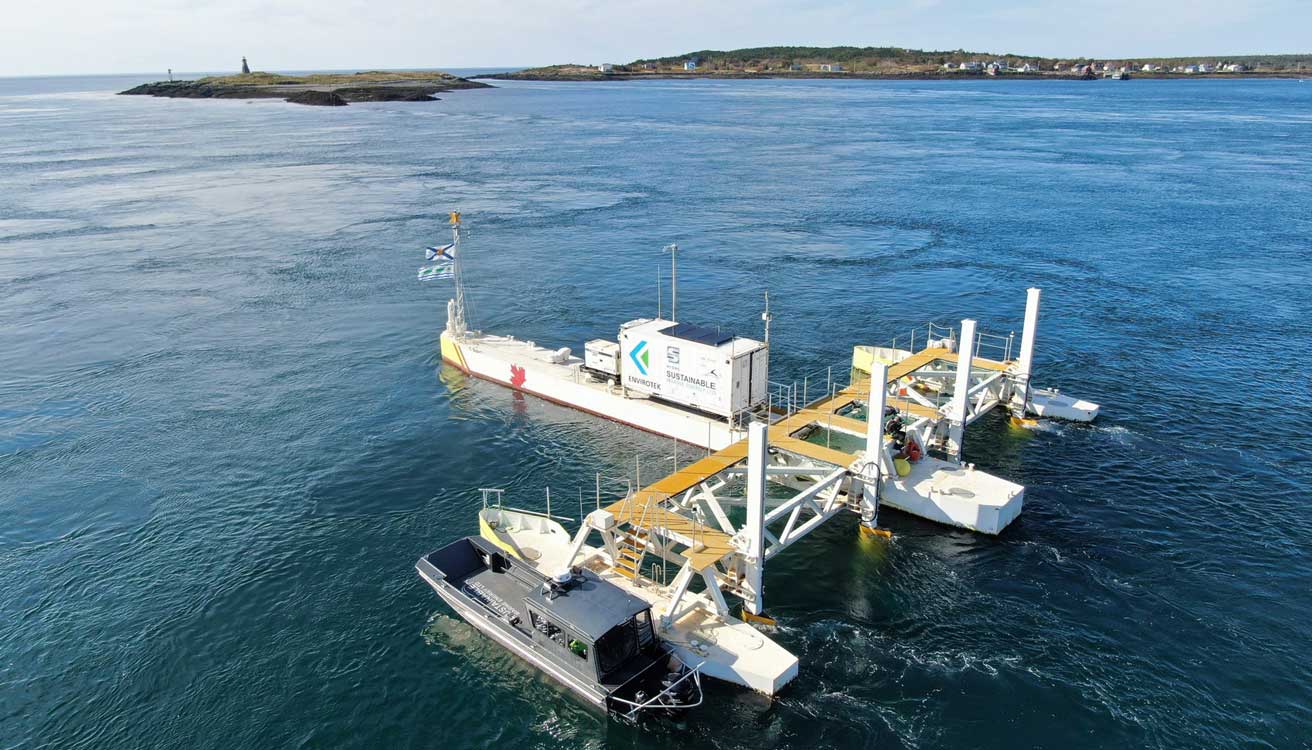
Contents
- Temperature sensor 2023 – The most important things in brief
- Combined vibration/temperature sensor with IO-Link
- Temperature sensor and humidity sensor with IO-Link
- Temperature sensor for bearings and drives in flow turbines
- Plug-and-play temperature sensors for IIoT
- Redundant thermocouple with a lifespan of 25 years
- Temperature sensor protects heat generator from overheating
- Number of measuring points reduced – specialist lecture
- Infrared temperature sensor with IO-Link and two switching outputs
- Infrared temperature sensors with high data reliability
- FAQ
Temperature sensor 2023 – The most important things in brief
Temperature sensors for industrial applications are becoming increasingly more accurate, reliable and versatile. Equipped with IO-Link interface it is suitable for predictive maintenance applications in the Industry 4.0 environment. Current trends in temperature sensing include the development of new materials such as nanomaterials and advanced semiconductors that enable more precise temperature measurement. Wireless and miniaturized sensors are also gaining importance, encouraging their use in IoT applications and wearable devices.
Another trend is the integration of sensors into smart systems that provide continuous monitoring and Real-time data analysis enable, particularly important in industrial automation and environmental monitoring. These advances increase efficiency and accuracy in a variety of applications, from medical Diagnostics up to Food Processing, and show the growing potential of temperature sensing.
Combined vibration/temperature sensor with IO-Link
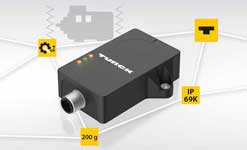 24.04.2023 | Turck expands its range Temperature Sensors around the robust vibration sensor with integrated temperature detection. The CMVT is suitable for condition monitoring applications and prevents e.g. B. that a machine is damaged by an imbalance of rotating parts. Vibration and temperature are crucial here for the timely detection of early defects.
24.04.2023 | Turck expands its range Temperature Sensors around the robust vibration sensor with integrated temperature detection. The CMVT is suitable for condition monitoring applications and prevents e.g. B. that a machine is damaged by an imbalance of rotating parts. Vibration and temperature are crucial here for the timely detection of early defects.
Temperature sensor and humidity sensor with IO-Link
 May 05.05.2021, XNUMX | With these combined temperature sensors / humidity sensors from Turck condition monitoring can be implemented cost-effectively on site and in the IIoT. About the IO-Link The interface allows the humidity, Temperature Sensors also particularly easy to integrate. The CMTH-M12 version combines both measured variables, humidity and temperature, in one device.
May 05.05.2021, XNUMX | With these combined temperature sensors / humidity sensors from Turck condition monitoring can be implemented cost-effectively on site and in the IIoT. About the IO-Link The interface allows the humidity, Temperature Sensors also particularly easy to integrate. The CMTH-M12 version combines both measured variables, humidity and temperature, in one device.
Temperature sensor for bearings and drives in flow turbines
10.12.2020/XNUMX/XNUMX | For a current turbine test stand for marine and tidal current systems Ephy measurement an Temperature sensor with Rotary encoder and pacemaker developed. With it the temperature of the Planetary gear and the Rolling can be determined at four measuring points.
The challenge with this application was that Attachment the temperature sensors on the static gear parts with their 2 m circumference. The fact that the measuring points are bathed in oil is also difficult. The customer preferred to attach the temperature sensors via Ring or Glue.
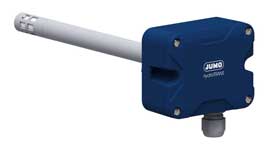 Temperature Transmitter | Industry novelties and applications
Temperature Transmitter | Industry novelties and applications
However, with this housing size, the material for the clamps would be almost more expensive than the temperature sensor itself. In addition, the oils used have a very aggressive effect on the elastomers and varnishes contained in the adhesives and casting compounds of the temperature sensors.
Clever temperature sensor attachment
Ephy-Mess has one for this application Cable resistance thermometer Recommended with metal sleeve and movable M8 compression fitting for precise adjustment of the installation depth. With this design, the tightness of the bore and temperature sensor could be ensured despite a threaded bore in the gearbox housing. The temperature sensor complies with protection class IP67. A shielded hose line in a 4-wire design compensates for this Cablesresistance of the 15 m long connection cable.
With this temperature sensor design, the gear geometry of the shaft to be scanned was ensured and very low Shaft speeds can be safely recognized. Given the limited space in the turbine, the normal temperature sensor would have been 2 mm too long and the turbine housing would no longer have to be closed. Thanks to the modular concept and the in-house production of the housing, this adjustment could be implemented in the shortest possible time.
The electronics of the clock generator are equipped with a threaded sleeve housing instead of a flange housing. The normally axially outgoing connection line was placed on the side. This saves more than 20 mm in length and meets all customer requirements.
Plug-and-play temperature sensors for IIoT
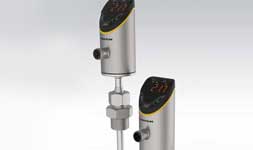 09.12.2020 | Turck extends his fluid sensors-Products around IO-Link capable temperature sensors for the flexible and reliable measurement of process temperatures. Compact devices with integrated temperature sensors (TS700) as well as evaluation electronics and display units (TS720) for connecting resistance thermometers or thermocouples are available.
09.12.2020 | Turck extends his fluid sensors-Products around IO-Link capable temperature sensors for the flexible and reliable measurement of process temperatures. Compact devices with integrated temperature sensors (TS700) as well as evaluation electronics and display units (TS720) for connecting resistance thermometers or thermocouples are available.
Redundant thermocouple with a lifespan of 25 years
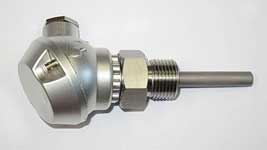 10.12.2019/XNUMX/XNUMX | For the Remote monitoring | effect Ephy measurement an Temperature sensor developed, for example, in mining systems, on motors for excavators, vans and elevators or on offshore wind turbines up to cable cars for surveillance security. Wherever the temperature can be measured absolutely reliably at exposed points, it bears temperature sensor to measure reliability.
10.12.2019/XNUMX/XNUMX | For the Remote monitoring | effect Ephy measurement an Temperature sensor developed, for example, in mining systems, on motors for excavators, vans and elevators or on offshore wind turbines up to cable cars for surveillance security. Wherever the temperature can be measured absolutely reliably at exposed points, it bears temperature sensor to measure reliability.
Temperature sensor protects heat generator from overheating
 May 20.05.2019, XNUMX | With the new STBSensor from Sontec Heat generator such as boilers, combined heat and power plants, steam generators, compressorsen, industrial systems and kitchen appliances such as stoves, deep fryers, etc. are protected from overheating. The STB safely switches off the device if the temperature increases or is exceeded.
May 20.05.2019, XNUMX | With the new STBSensor from Sontec Heat generator such as boilers, combined heat and power plants, steam generators, compressorsen, industrial systems and kitchen appliances such as stoves, deep fryers, etc. are protected from overheating. The STB safely switches off the device if the temperature increases or is exceeded.
The manufacturer replaces the standard solution with two separate ones Sensors by a circuit board solution with a double temperature element SMD base, which is integrated in a cast, customer-specific shaped housing sleeve.
The patent pendinge STB sensor can be optionally equipped with two Pt-100/0 and NTC elements as well as with an NTC/Pt combination. The innovative thermal coupling ensures maximum reliability. With the NTC/Pt version, the temperature sensor can also monitor itself due to the various temperature drifts of the elements.
Technical features include the compact design, the low Differential temperature with rapid temperature changes that High measuring accuracy and the simple electrical connection using insulation displacement connectors or cable connections.
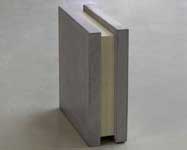 High-performance insulation reduces wall thickness by 50 percent
High-performance insulation reduces wall thickness by 50 percent
With its simple structure, the STB sensor replaces more cost-intensive systems. In addition, the mechanical positioning of the elements guarantees a high level of process stability. The Sensor can also be used for simple temperature measurements, thus saving an additional measuring point.
Number of measuring points reduced – specialist lecture
16.02.2018 | Martin Leupold, Senior Product Manager Process Sensors, Baumer MDS GmbH, Stockach, shows how efficient and flexible fluid management is possible using the "Flexflow" flow and temperature sensors. The lecture was given on January 30, 2018 on the occasion of the trade press days in Karlsruhe.
Infrared temperature sensor with IO-Link and two switching outputs
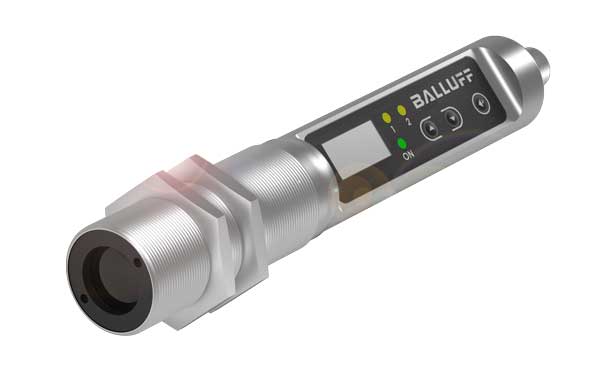 05.02.2017 | Balluff has now developed the BTS, a new infrared temperature sensor with an IO-Link interface and two switching outputs. It can be used to monitor temperatures between 250° and 1250 °C in a non-contact and non-reactive manner, even in inaccessible or dangerous environments for people, to detect hot objects even in motion and to record temperature values.
05.02.2017 | Balluff has now developed the BTS, a new infrared temperature sensor with an IO-Link interface and two switching outputs. It can be used to monitor temperatures between 250° and 1250 °C in a non-contact and non-reactive manner, even in inaccessible or dangerous environments for people, to detect hot objects even in motion and to record temperature values.
The pyrometer in a robust M30 stainless steel housing with protection class IP67 For the first time in this design, it offers a multifunctional display with plain text information and automatic display alignment like on a smartphone. The IO-Link interface, for example, enables the sensor to be parameterized remotely from the higher-level steering or a control center.
A multitude of settings and functions open up a wide range of applications to the user. Examples of areas of application for the temperature sensor are: foundries, forges, steelworks, the ceramics industry or glassworks.
Infrared temperature sensors with high data reliability
 20.02.2015/XNUMX/XNUMX | The non-contact temperature sensors from Raytek By measuring infrared radiation, we determine very precisely the temperatures of workpieces, materials and production systems on the one hand and in the range from -50° to 3000 °C on the other. The MI3 series devices can be flexibly integrated into any application. At just 28 mm long and 14 mm diameter, the IP65 measuring head is the smallest stand-alone infrared pyrometer in the world.
20.02.2015/XNUMX/XNUMX | The non-contact temperature sensors from Raytek By measuring infrared radiation, we determine very precisely the temperatures of workpieces, materials and production systems on the one hand and in the range from -50° to 3000 °C on the other. The MI3 series devices can be flexibly integrated into any application. At just 28 mm long and 14 mm diameter, the IP65 measuring head is the smallest stand-alone infrared pyrometer in the world.
The Digitalization of the measurement signal in the sensor head ensures high data reliability. The technology supports automated monitoring and reporting and is also suitable for modernizing traditional measuring points.
For integration into a Network At the operating and control level, communication boxes are available that generate analog signals or interfaces to common ones fieldbussen and Industrial Ethernet-create systems. Up to eight measuring heads can be connected to one box. Raytek is currently preparing to launch a miniature pyrometer certified for hazardous environments.
FAQ
How does a temperature sensor work?
A temperature sensor is an electrical or electronic component that measures temperature. It does this by measuring changes in the physical properties of materials in response to temperature changes and converting these into an electrical signal. The signal is sent directly or made indirectly via the change in resistance.
What kind of temperature sensors are there?
Different types of temperature sensors use different principles:
- Thermocouples generate an electrical voltage depending on the temperature difference between two different metals.
- Resistance thermometer take advantage of the fact that the electrical resistance of certain metals varies with temperature.
- Semiconductor-Temperature sensors change their electrical resistance with temperature in a predictable manner.
- Infrared-Sensors measure the infrared radiation emitted by an object to determine its temperature.
Source: This article is based on information from the following companies: Balluff, Ephy-Mess, Raytek, STB, Turck.

Angela Struck is editor-in-chief of the development scout and freelance journalist as well as managing director of Presse Service Büro GbR in Ried.
